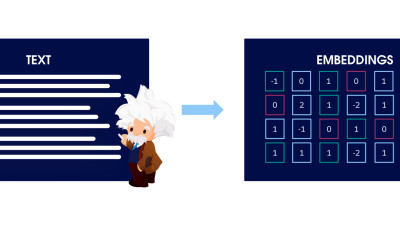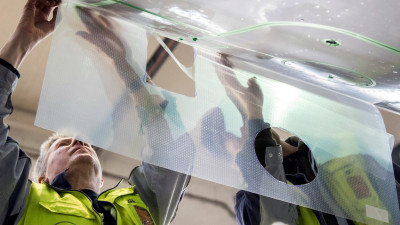With CES 2016 underway in Las Vegas this week, we are expecting to have announcements about exciting tech advancements coming out of our ears. Case in point: At The Ford Motor Company's press conference this morning, it announced a partnership with Amazon to integrate vehicles with Echo, the e-commerce company’s smarthome device.
Trending:
GM, Ford Launch New Partnerships to Drive the Future of Mobility
With CES 2016 underway in Las Vegas this week, we are expecting to have announcements about exciting tech advancements coming out of our ears. Case in point: At The Ford Motor Company's press conference this morning, it announced a partnership with Amazon to integrate vehicles with Echo, the e-commerce company’s smarthome device.
“What we want to do is move aggressively into home integrations with the car,” Ford CEO Mark Fields told Re/code in an interview. He gave examples of starting your car or checking your gas level from the Echo system in your home, and accessing your home security system from inside your car.
“This is about empowering customers and giving them a great experience,” he added.
Fields stressed that the company is evolving into an “auto and mobility company,” which is in-line with its Smart Mobility Plan and the 25 experiments Ford highlighted at last year’s CES.
There were rumors that the automaker would announce a new joint venture with Google to build self-driving vehicles at the event, but Fields said that Ford would not be using the Internet giant’s autonomous vehicle software. The partnership would have benefited Ford with Google’s software expertise, and given Google access to Ford’s well-established automotive manufacturing infrastructure.
“We talk with everyone, and those conversations are private,” Fields told Re/code.
Ford’s VP of Product Development, Raj Nair, unveiled the latest developments in the company’s decade-long autonomous vehicles program at CES: the company will triple its autonomous vehicle testing fleet, for a total of 30 vehicles being tested across the US. Last month, the company announced it will begin testing self-driving Fusion Hybrid sedans on California streets in 2016. Nair announced that they are also working on SAE Level 4 automated driving, also known as “High Automation,” a level that does not rely on a human driver to respond to a request to intervene, and will be targeting Level 5 autonomy in the near future.
"When the first Ford autonomous vehicle comes out, it will not just be for those who can afford luxury vehicles," Fields noted after Nair made the announcement.
The comment was in reference to high-priced competitors such as Tesla Motors and Mercedes-Benz, which are developing their own self-driving controls. Mercedez-Benz, Nissan, and Volvo have plans to offer autonomous vehicles for customer sales by 2020. It is believed that all autonomous competitors are operating at SAE Level 3 autonomy.
Yet, Ford’s autonomous vehicles will likely face stiff competition – even from Google. Google’s Self-Driving Car Project, which currently operates under the company’s Google X research division but is expected to become a stand-alone business under the Alphabet Inc. corporate umbrella this year, already has 53 test vehicles on the road in California and Texas, with 1.3 million miles logged in autonomous driving. It is currently using modified Lexus and Toyota Prius vehicles to test its self-driving software.
Google reportedly has plans to monetize the technology by rivaling companies such as Uber and Lyft Inc. with taxi or car-sharing services in urban areas. Its self-driving unit may need to partner with an automaker to create its ride-for-hire service network, which fueled the speculation around a Ford-Google collaboration. Introducing the public to the technology through offering it as a service rather than through car sales is appealing given that about two thirds of consumers are hesitant to buy self-driving cars due to concerns about crashes and a lack of control.
“These potential ride-for-hire services could allow consumers to experience the technology and embrace it in a bigger way,” Thilo Koslowski, VP and automotive practice leader at Garter Inc. told Bloomberg.
General Motors (GM) seems to be taking that approach. Outside of the official CES events, GM announced a $500 million investment in Lyft, which may result in an “integrated network of on-demand autonomous vehicles part of people’s daily lives.”
GM has been slower to develop autonomous vehicles. Late this year, it is expected that the company’s fleet of autonomous 2017 model year Chevy Volts will be tested at its Technical Center campus in Warren, Michigan, and consumers will be able to purchase autonomous 2017 Cadillac CT6 vehicles. It seems GM may be focusing on the opportunities presented by the service economy to gain some ground in the competitive autonomous vehicle landscape.
“The car industry is going to change more in the next five years than in the past 50,” said GM President Dan Ammann. “Even for GM, $500 million is a lot of money, but investing in different business models [is] going to be an important part of our future.”
The investment is part of a larger $1 billion funding round for Lyft. The startup has raised $2 billion since its founding in 2013. Neither GM nor Lyft has confirmed whether the deal is exclusive, and the details of their collaboration have yet to be released.
“GM is the largest automaker in the U.S., so it made a lot of sense,” Lyft President and Co-Founder John Zimmer said of the investment. “We both see the future of transportation through a network versus ownership, and this is a step in that direction.”








